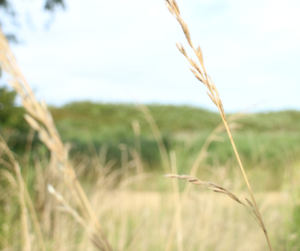The shape of grass seeds with their sharp tip means that they can very easily penetrate through your dog’s skin or lodge themselves in your pet’s ears or eyes. Most seeds have an awn that fans out and makes it almost impossible for the grass seed to go backwards – very similar to a fish hook. Grass seeds will generally start their journey when they get caught in your dog’s coat during a walk or play in long grass. From there, they are able to penetrate the skin and if undetected, can travel to various areas of the body. Grass seeds carry infection through the skin and into the body, and will generally cause a painful swelling which progresses to cause an abscess in your dog.
It is critical to recognise the signs of a possible grass seed problem early, as this can allow for quick treatment and the minimisation of an ongoing or fatal issue. Signs of grass seed related problems depends on where the grass seed has lodged. This will often cause a swelling at the site of lodgement, which your dog will become very irritated with. Often dogs will try to lick, scratch or chew the affected area. For instance, in the most common area that grass seeds will end up which is the paw, your pup may identify with a swollen, red paw, with a weeping hole that they continue to lick and chew at. They may also be lame on that leg.
It is extremely important that if a grass seed is suspected, that a visit to your veterinarian happens as soon as possible. In most scenarios, they will need to place your dog under sedation or general anaesthesia to examine, clean and no doubt explore the area to find the grass seed, which can be an uncomfortable process for your pet in an already very tender area. There are times when a grass seed is highly suspected but is not found when the area is explored surgically. Antibiotics and anti-inflammatory medication are usually required after removing a grass seed as they often carry infection into the body where they have lodged and cause inflammation in the surrounding area. Occasionally grass seeds can travel through intestines and even lodge next to the spine or in the lungs. For seeds that have travelled a long distance, CT scan or specialist ultrasound may be suggested. On the whole, the outcome for grass seed removal is good, and your pet would be back to normal within a couple of weeks.
Be on the lookout during the late spring and summer months when there is a greater risk of grass seed problems.
Here are some things to keep in mind and watch out for:
- Keep your grass and weeds under control at home with regular maintenance
- Avoid long grass when on walks
- Keep long haired dogs groomed, especially around their feet and ears
- Inspect your dog all over after each walk, making sure you check in between and under all toes and underneath the ears

